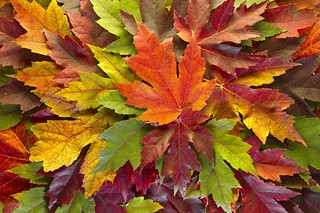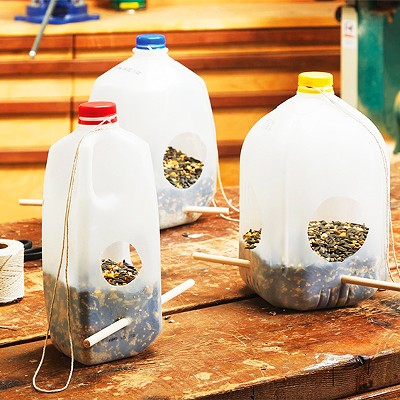Fall is just around the corner, and with it comes cooler temperatures, shorter days and plenty of outdoor yard work. I have always loved the occasional crunchy leaf on a sidewalk, but what to do when soggy, unsightly, smelly piles of leaves accumulate? While the temptation to bag and dispose of leaves is hard to resist, consider that according to the Environmental Protection Agency, leaves and yard debris create about 34.7 million tons of waste in landfills per year – that is 13.3% of all solid waste in the United States.
This waste isn't only taking up space. As it decomposes in landfills, yard waste can release methane gas into the air, as well as leach acidic properties into the ground, polluting our soil and water. Many communities used to burn leaves, but most cities have understandably banned leaf burning due to the risks of fire and air pollution. So what should we do with all of these leaves that keep falling? Read on for some sustainable and creative approaches to dealing with your fallen foliage.
Leave your leaves on the ground
Arguably the simplest option for treating fallen leaves is to simply do nothing and to leave them on the ground. The benefits of this approach go beyond ease. The National Wildlife Federation attests that "leaf litter" acts as a vital habitat for many forms of wildlife. Turtles, toads, songbirds, mammals, invertebrates and moths and butterflies all use leaf litter for food, shelter and nesting when given the chance. Additionally, as leaves break down in your yard, they provide beneficial nutrients to the soil beneath, ultimately acting as a natural fertilizer.
Mulch your leaves
Even though leaving your leaves has benefits, the fact of the matter is that large leaves, such as those from oak and sycamore trees, create too much leaf litter to break down naturally. Plus, those wet, slick piles can be unsightly and odorous. In this case, a useful compromise between leaving and removing your leaves is mulching them. Many gas or electric mowers have mulching options that allow you to shred your leaves into smaller segments, which can then break down naturally and don't take up as much space on your lawn. Leaving these tiny leaf particles on your lawn gives you the benefit of that natural fertilizer without all the mess.
Rake your leaves, but then reuse them
If you can't resist the rake this fall, turn your leaf piles into something useful. Compost piles need both wet and dry materials to do their magic, and fallen leaves are a perfect dry material. Composted leaves will decompose faster if you shred or cut them first, but no need if you want to skip this step. If you have more leaves than you do compost, store dry leaves in a trash can to use as brown material in spring.
A second sustainable option for raked leaves is to brew up some leaf mold. It sounds gross, but leaf mold is a natural and cost-free organic mulch that can greatly benefit your soil. To make leaf mold, set dry leaves aside in a wood or wire bin, or simply store them in plastic garbage bags outside. Keep leaves in your bin or bag moist by adding water when you accumulate new leaves, and then again every month or two or as your leaves dry out. Leaf mold can take a year or two to finish, but once it does, you can add it to flower beds and gardens as organic, cost-free mulch.
Finally, consider using your leaves as insulation for your outdoor plants in the winter and early spring. Simply create a ring of wire fencing around vulnerable plants, and fill the fencing with leaves all the way around the plant. When the chilliest days of winter and early spring have passed, remove the leaves and mulch or compost them.
Get creative
Last but not least, consider the beauty of the varied hues of autumn and use your leaves to create something fun. Gather the family to do some leaf rubbings or glue leaves to paper for a collage. Stuff leaves into old clothes and build a scarecrow. Press and dry leaves, and add modge podge to preserve them so that you can create garlands, centerpieces, bookmarks and more. Most of all, enjoy this brief but beautiful season outdoors.






















